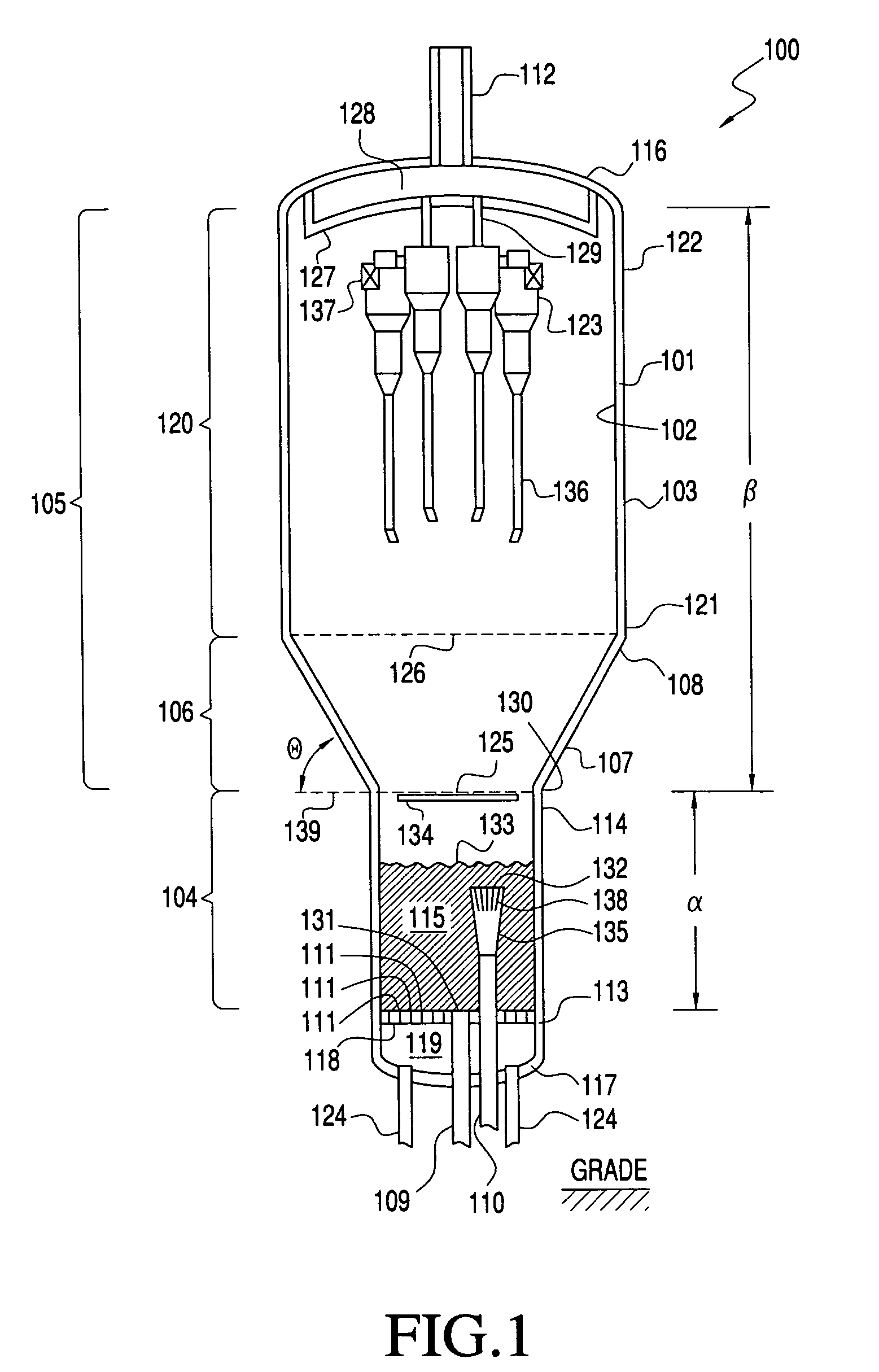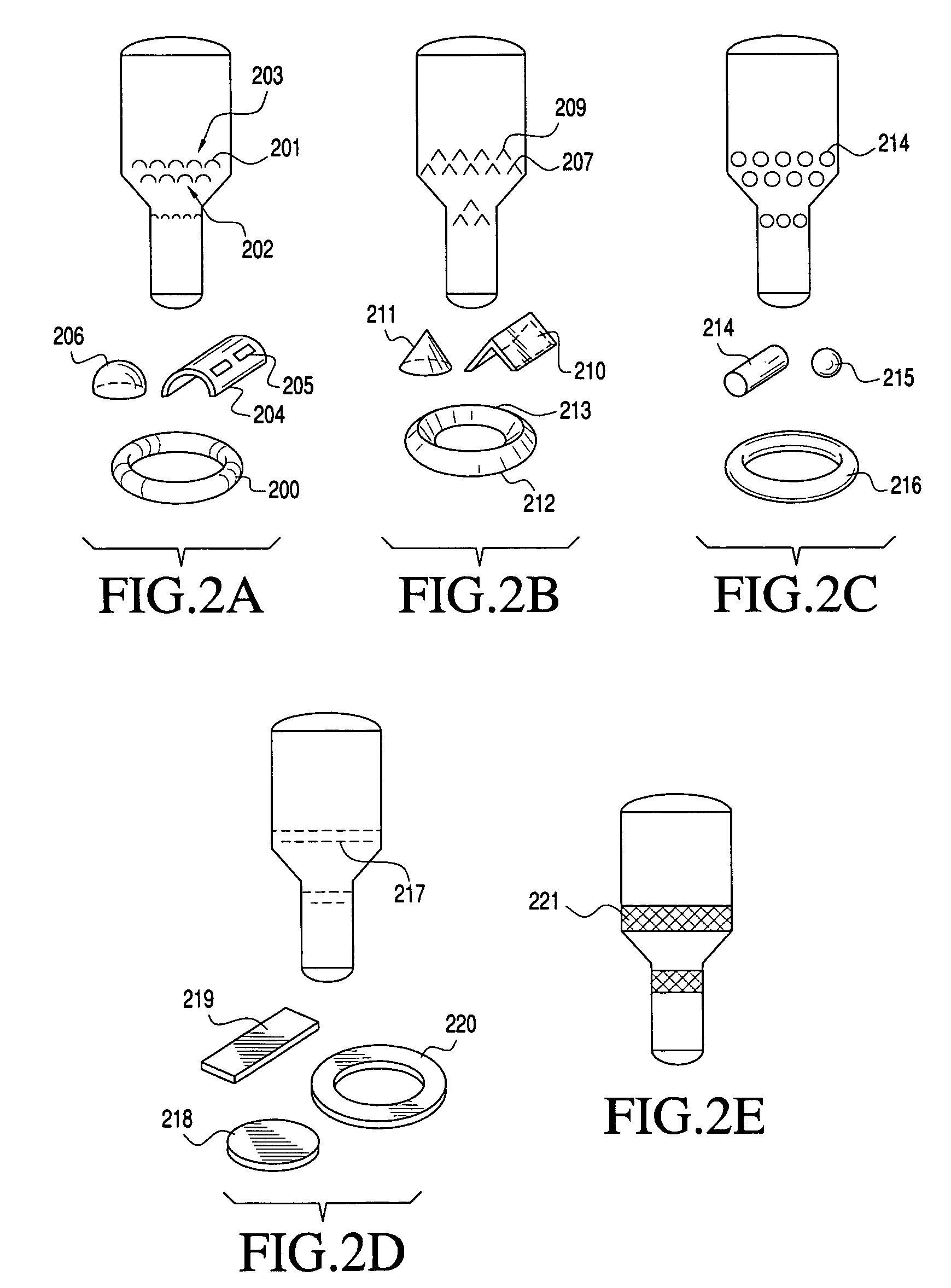Fluidizing a population of catalyst particles having a low catalyst fines content
a technology of catalyst particles and fine particles, which is applied in the field of fluidizing a population of catalyst particles, can solve the problems of increasing the cost of petroleum olefin production, increasing the cost of olefin production, and reducing the efficiency of fluidizing, so as to achieve efficient fluidization
- Summary
- Abstract
- Description
- Claims
- Application Information
AI Technical Summary
Benefits of technology
Problems solved by technology
Method used
Image
Examples
examples 1 and 2
[0196]In Examples 1 and 2, a population of catalyst particles having a low fines content was fluidized in a fluidized bed reactor at a vessel velocity of 0.15 ft / s. The fluidized bed reactor was generally of the form illustrated in FIG. 4, but implemented a sparger and external separation devices. Example 1 included 2 subway grate obstructing members of the type shown in FIG. 4 in the dense phase, and Example 2 included 1 subway grate obstructing member of the type shown in FIG. 4 in the dense phase. The specific particle size distributions for Examples 1 and 2 were as follows:
[0197]
TABLE ILow Fines Content PSDParticle SizeExamples 1 & 2(Microns)(wt %)~0.420–45~1.245–75~42.6 75–120~46.6120–200~8.8
[0198]In these examples, dynamic bed pressure drop measurements were taken over a period of time of 0-1200 seconds. The results of Example 1, shown in FIG. 6, show that the pressure oscillations in the fluidized bed were on the order of + / −1 inch of water when two baffles are implemented. T...
example 3
[0200]In Example 3, a population of catalyst particles having a low fines content was fluidized in a fluidized bed reactor at a vessel velocity of 0.5 ft / s. The fluidized bed reactor was generally of the form illustrated in FIG. 5 having 6 layers of inverted “V” shaped, shed type obstructing members, but implementing a sparger and external separation devices. The specific particle size distribution was as shown in Table I, above.
[0201]In this example, dynamic bed pressure drop measurements were taken over a period of time of 0-1200 seconds. The results of Example 3, shown in FIG. 8, show that the pressure oscillations in the fluidized bed were on the order of + / −0.5 to 1.0 inch of water. This represents particularly good fluidization notwithstanding the low fines content.
example 4
[0202]Example 4 is a comparative example in which a population of catalyst particles having a low fines content was fluidized in a fluidized bed reactor at a vessel velocity of 0.15 ft / s. The fluidized bed reactor did not contain any obstructing members. The specific particle size distribution was as shown in Table I, above.
[0203]In this example, dynamic bed pressure drop measurements were taken over a period of time of 0-1200 seconds. The results of Example 4, shown in FIG. 9, show that the pressure oscillations in the fluidized bed were on the order of + / −4.0 to 5.0 inches of water. This represents very poor fluidization due to the low fines content.
PUM
| Property | Measurement | Unit |
|---|---|---|
| particle sizes | aaaaa | aaaaa |
| particle diameter | aaaaa | aaaaa |
| particle sizes | aaaaa | aaaaa |
Abstract
Description
Claims
Application Information
 Login to View More
Login to View More - R&D
- Intellectual Property
- Life Sciences
- Materials
- Tech Scout
- Unparalleled Data Quality
- Higher Quality Content
- 60% Fewer Hallucinations
Browse by: Latest US Patents, China's latest patents, Technical Efficacy Thesaurus, Application Domain, Technology Topic, Popular Technical Reports.
© 2025 PatSnap. All rights reserved.Legal|Privacy policy|Modern Slavery Act Transparency Statement|Sitemap|About US| Contact US: help@patsnap.com



